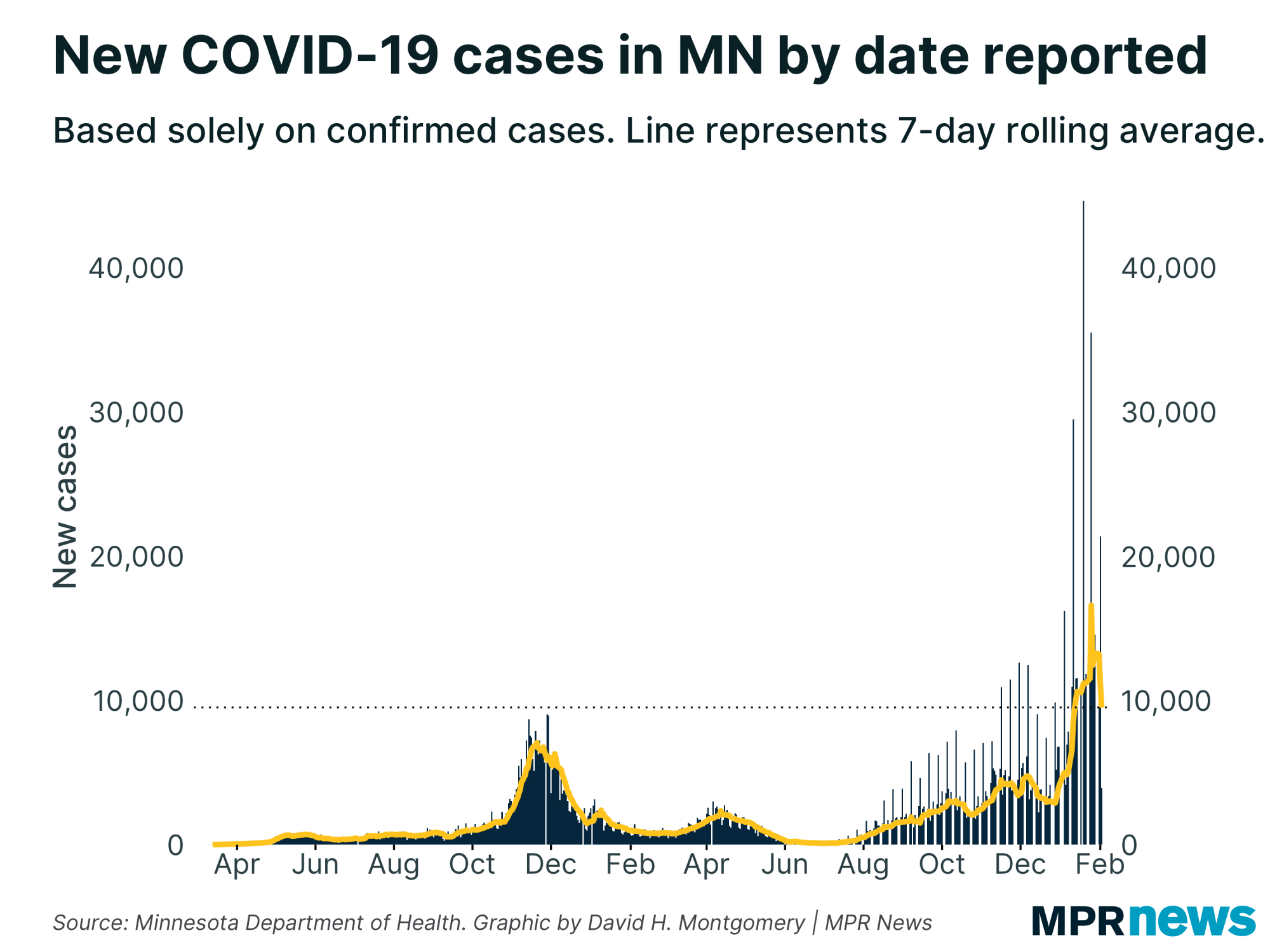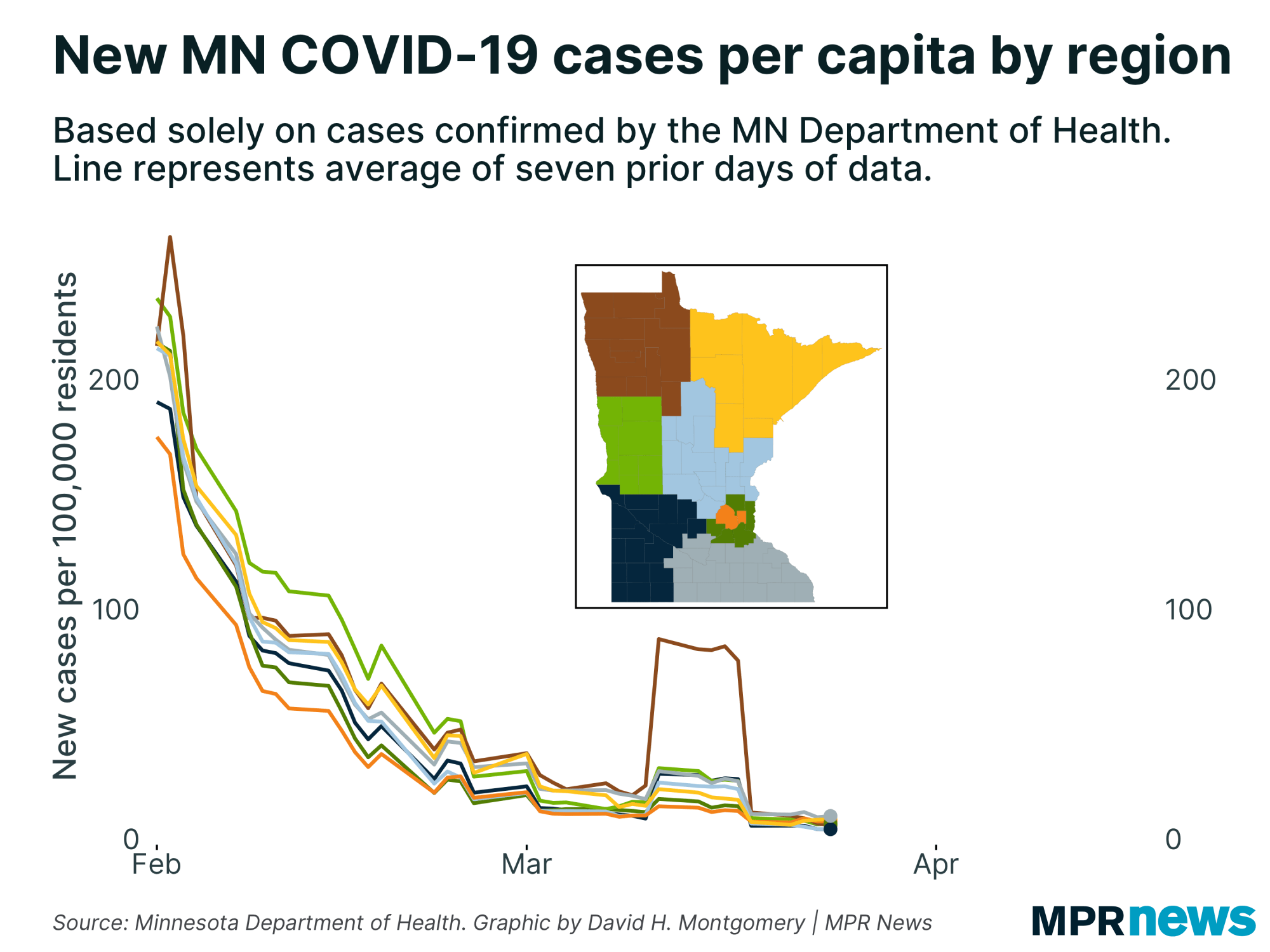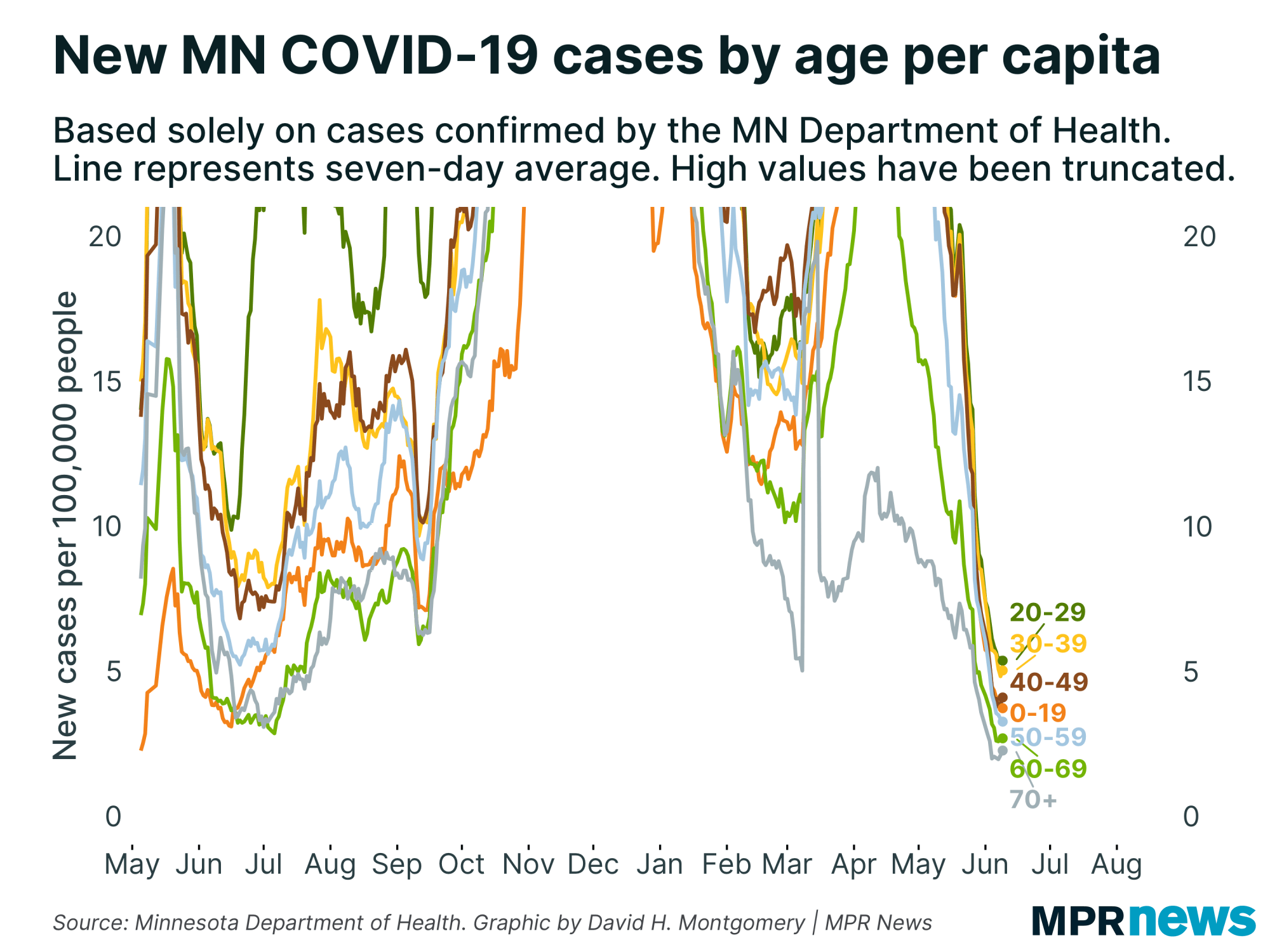Aug. 26 update on COVID-19 in MN: 14 deaths, 542 new cases

Go Deeper.
Create an account or log in to save stories.
Like this?
Thanks for liking this story! We have added it to a list of your favorite stories.
Updated: 2:11 p.m.
The toll from COVID-19 on Minnesota continued, as the Health Department reported 14 deaths Wednesday, the highest death count reported in a week. Two of those deaths were Minnesotans in their 30s from Hennepin County.
While new cases were higher Wednesday at 542 compared to Tuesday (414), the count was lower than the average count of new cases for the past seven days.
Hospitalizations, including patients needing intensive care, drifted lower. ICU patients hit their lowest count in a month at 134.

Coronavirus statistics in Minnesota as of Wednesday:
Support Local News
When breaking news happens, MPR News provides the context you need. Help us meet the significant demands of these newsgathering efforts.
71,236 total cases confirmed (542 new), 64,374 off isolation
1,793 deaths (14 new)
304 currently hospitalized; 304 in intensive care
The deaths of two patients in their 30s is a relative rarity for the pandemic, as 1.22 percent of fatalities have been under age 40. A spokesperson from the Health Department said neither patient appeared to have underlying health problems.
With the start of school approaching for Minnesota students, state health officials want people to take extra precautions to halt the spread of COVID-19, such as staying away from gatherings outside homes.

Minnesota infectious disease director Kris Ehresmann said everyone should help limit community transmission of the virus to make on-site learning more possible for students.
"Our priority right now is ensuring that kids can safely attend school, and as many in person as safely possible, and so we want to make sure that what's happening in the community is at a place to allow for as much in-person education as can safely happen," Ehresmann said.
Due to increasing case numbers, several districts have shifted away from initial plans for in-person learning — and others are considering it.
Developments from around the state
Health Department to prepare saliva test ramp-up
Faced with demand for more COVID-19 tests this fall, the state is using $14 million in federal coronavirus relief funds to build capacity by doing up to 30,000 saliva tests daily.
The strategy relies on a saliva-based test developed by Vault Health and Rutgers University that can be done at home.
Minnesota is already doing 22,000 tests daily. But Minnesota Health Commissioner Jan Malcolm said more than doubling that capacity with saliva tests will help meet demand for tests as schools reopen.
"For schools, it's going to be critically important that we be able to distinguish the typically respiratory illnesses that kids and teachers encounter from COVID," Malcolm said.
The saliva test also stands to cut down on the use of scarce personal protective equipment.
Plans include a lab in Minnesota to process these tests, potentially cutting down on the time it takes to get a result.
College concerns continue
Worries continue over the growth of COVID-19 among younger Minnesotans, including that those infected will inadvertently spread the virus to more vulnerable or older relatives.
People in their 20s remain the age group with the highest number of COVID-19 confirmed cases in the pandemic — more than 16,000. The median age of cases is 36.
The University of Minnesota’s Board of Regents approved a proposal to delay in-person classes for students on some of its campuses.

According to the plan, nearly all undergraduate classes on three of the university’s campuses — in the Twin Cities, Rochester and Duluth — will now begin online for at least the first two weeks of school this fall. Move-in for students who live in on-campus housing at those three locations will also be delayed by two weeks.
The university’s Twin Cities campus is scheduled to begin classes on Sept. 8.
The Crookston and Morris campuses will begin the semester as planned.
— Peter Cox | MPR News
Need help with rent, mortgage? Here’s how to get it
Minnesotans can now apply for a slice of the $100 million in rent and mortgage assistance from Minnesota Housing.
The money is intended for Minnesotans who are financially struggling from COVID-19 and meet certain income requirements. Applicants can call 211 from 8 a.m. to 8 p.m.; staff speaking multiple languages will be on hand.
They can also text 211 and type “MNRENT,” or go online to 211unitedway.org. Once the process begins, applicants can track their status online. The $100 million dollars is from the federal CARES act and can help pay housing costs like rent, mortgage, lot fees in manufactured home parks, and utility payments.
While the money is for both homeowners and renters, Minnesota Housing Commissioner Jennifer Ho said she hopes homeowners are exploring all their options.
“We really encourage people who have a mortgage to reach out to their financial institution, and find out if they are eligible to get forbearance because a lot of financial institutions are offering the ability not to pay right away," Ho said.
— Melissa Townsend | MPR News
Top headlines
Summer brings challenges, surprises for small resorts: Many in western Minnesota’s lakes country went into the season bracing for the worst, as the spreading coronavirus upended vacation plans and put reservation calendars in a tailspin — but some have fared better than they expected.
Can a ‘pandemic pod’ stem the widening education gap? One neighborhood group wants to try: In light of concerns about widening inequities, one Minneapolis neighborhood is using the “pandemic pod'“ model to help students who would fall behind without additional support.
Minnesota bets big on coronavirus saliva testing to double capacity: With students heading back to school this fall, state officials say demand for coronavirus testing could skyrocket. The state’s new $14 million plan to test saliva for the virus could help Minnesota double its capacity.
COVID-19 in Minnesota
Data in these graphs are based off Minnesota Department of Health cumulative totals released at 11 a.m. daily. You can find more detailed statistics on COVID-19 at the Health Department website.
The coronavirus is transmitted through respiratory droplets, coughs and sneezes, similar to the way the flu can spread.


